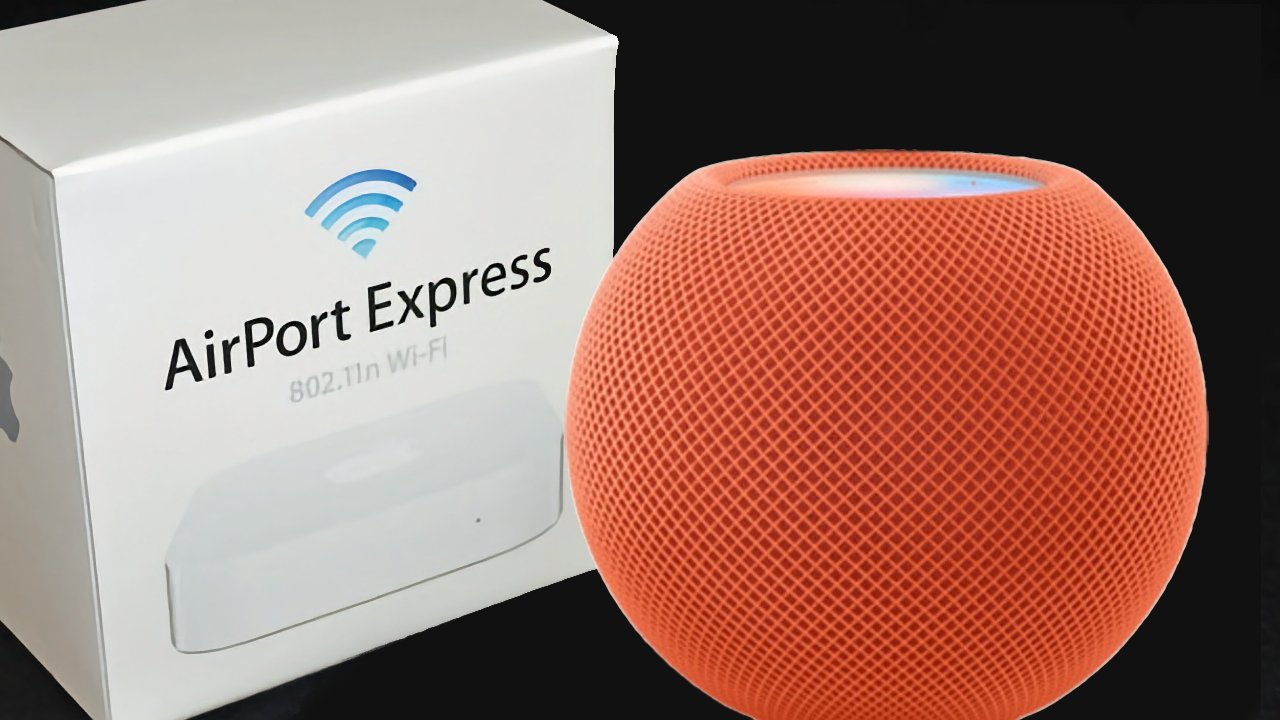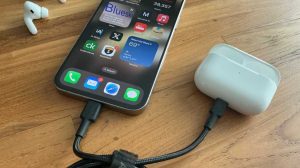
New HomePod mini (right) and Apple’s old AirPort Express (left)

While Apple appears to have no plans to revive its former AirPort routers, the networking know-how that powered them may be returning — via a new chip that will add similar functionality to the company’s home devices like the HomePod mini.
Apple first introduced the AirPort line of residential internet gateways in 1999, and continued to iterate the product line until the final AirPort Extreme router was discontinued in 2018. Since then, fans have called for the company to revive the product, celebrated for its ease of setup and management.
While most third-party routers have gotten increasingly antenna-laden and spider-like, home gateways from the big residential internet providers, such as AT&T, Comcast, Optimum, T-Mobile, Verizon, and Windstream have mostly moved to AirPort-like smooth boxes. These home routers utilize internal antennas, offering whole-home coverage for most single-story homes, with small plug-in signal repeaters for multi-story or larger residences.
According to Bloomberg, Apple will start incorporating its own networking technology starting in 2025. It will be via a single small chip, designed by the company and codenamed Proxima, into its products. Among the first devices to get the chip will be Apple’s long-rumored smart-home hub, along with updated versions of the HomePod mini, and Apple TV set-top box.
Apple’s networking plans
 A typical Comcast/Xfinity home router, widely used in the US and Canada.
A typical Comcast/Xfinity home router, widely used in the US and Canada.
Apple intends to replace the current Broadcom technology it uses for its products with the Proxima chip over the coming years. The chip will handle the technical aspects of cellular and Wi-Fi networking, while the devices use their current built-in antennas.
Proxima will be a boon for Apple on several fronts. It gives the company more control over its networking stack, frees it to incorporate future technologies as they arrive, and will eventually reduce the cost to Apple, which currently pays Broadcom to license the latter’s technology.
In the near term, the Proxima chip is likely to be used as a smaller, Apple-controlled network card for receiving Wi-Fi in future Mac, iPhone, and home products like the HomePod mini. In the long-rumored smart home hub control product, however, it could potentially be a wireless access point on its own.
Various renderings of what an Apple home hub — which might even take over the name “HomePod” — might look like show it as a device with a high-quality speaker for music, and a modest-sized display for quickly seeing and adjusting home information. It might work like a larger, more versatile version of the iPhone’s existing “Standby Mode,” which can show time, temperature, weather and other widget-type information.
While it would be unlikely to replace the current generation of provider-supplied home routers, such a device could easily function as a repeater, boosting the router’s signal to the further reaches of the home invisibly alongside its other duties. This would make having more than one unit in larger residences or vertical structures an attractive option.
We can expect to hear more about Apple’s home hub and further push into smart-home products, including a rumored doorbell that could use Face ID to authenticate family members and unlock for them, in mid-2025 at the WWDC event. When any updated or new products will actually arrive, however, would likely be timed for later in 2025 or into 2026.
Apple’s original AirPort idea
 Apple’s previous AirPort hardware lineup, still enjoyed by veteran Apple users. Photo: Apple
Apple’s previous AirPort hardware lineup, still enjoyed by veteran Apple users. Photo: Apple
For those who may not be aware of Apple’s history with making networking hardware, the AirPort line Apple made through the early 2000s were a significant step forward compared to competing routers of the time. This was largely due to their seamless integration into Apple’s software, finally making it possible for ordinary home users to configure and manage the router.
Because of the ease of use and distinctive white plastic look of the products, they sold very well to both consumers and small businesses. Apple was among the first to grasp the concept of a repeater to spread the AirPort signal throughout a property, and a smaller AirPort Express was made that could be used as a mini-router or as a signal repeater from the larger AirPort models.
Apple made new versions of the AirPort line as networking standards evolved, and some of the later models are still in use today. As the rest of the industry caught up and introduced “mesh” networking to extend Wi-Fi range, Apple threw in the towel and abandoned the AirPort product line.
In 2019, Apple announced a collaboration with other router makers to introduce a protocol called HomeKit Secure Routers, alongside HomeKit Secure Video. The former was a certification program that would ensure third-party routers would work well with Apple’s secure and private HomeKit standard.
 The Linksys AX4200 router included support for Apple’s HomeKit technologies.
The Linksys AX4200 router included support for Apple’s HomeKit technologies.
Sadly, few manufacturers took up Apple’s certification offer, and the program quietly died in early 2024. Now, it appears that the Proxima chip will allow Apple to directly control HomeKit compatibility, along with enhancing security and privacy, without having to rely on provider-supplied router manufacturers.




